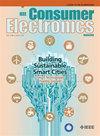Revisiting Alignment and Uniformity for Recommendation via Discrimination and Reliable Assessment
IF 4.3
2区 计算机科学
Q1 ENGINEERING, ELECTRICAL & ELECTRONIC
引用次数: 0
Abstract
Utilizing alignment and uniformity for recommendation has shown success in considering similarities between users and items. Despite this effectiveness, we argue that they suffer from two limitations: (1) alignment loss as a measure of model quality fluctuates significantly during adjustment, leading to inaccurate assessments. (2) Current methods ignore potential connections for user-user and item-item, resulting in incomplete understanding of user preferences and item characteristics.To address these issues, we propose using the trace of user and item correlation matrices as a new assessment metric to replace traditional alignment for the first time. This design reduces the impact of hyperparameters on model assessment, ensuring that trace and model quality are optimized simultaneously, thereby improving recommendation accuracy. Based on this, we introduce a new model Alignment and Uniformity with Discrimination, which additionally considers the similarities for user-user and item-item. Specifically, DiscrimAU calculates the Euclidean distance between the user (item) relevance matrix and its fully aligned matrix, distinguishing the relevance levels among different users (items). This process ensures that highly relevant users and items are more closely aligned, capturing more information. Extensive experiments on three datasets show that the proposed model achieves a maximum improvement of 6.29%, clearly demonstrating its effectiveness.通过鉴别和可靠评估重新审视推荐的一致性和统一性
在考虑用户和项目之间的相似性方面,利用一致性和一致性进行推荐已经取得了成功。尽管这种有效性,我们认为它们有两个局限性:(1)校准损失作为模型质量的度量在调整期间显著波动,导致不准确的评估。(2)目前的方法忽略了用户-用户和物品-物品之间的潜在联系,导致对用户偏好和物品特征的理解不完整。为了解决这些问题,我们首次提出使用用户和项目相关矩阵的跟踪作为新的评估度量来取代传统的对齐。该设计减少了超参数对模型评估的影响,确保跟踪和模型质量同时优化,从而提高推荐精度。在此基础上,我们引入了一种新的模型,该模型考虑了用户-用户和物品-物品之间的相似性。具体来说,DiscrimAU计算用户(物品)相关矩阵与其完全对齐矩阵之间的欧氏距离,区分不同用户(物品)之间的相关程度。这个过程确保高度相关的用户和项目更加紧密地结合在一起,从而获取更多的信息。在三个数据集上的大量实验表明,该模型的最大改进率为6.29%,充分证明了该模型的有效性。
本文章由计算机程序翻译,如有差异,请以英文原文为准。
求助全文
约1分钟内获得全文
求助全文
来源期刊
CiteScore
7.70
自引率
9.30%
发文量
59
审稿时长
3.3 months
期刊介绍:
The main focus for the IEEE Transactions on Consumer Electronics is the engineering and research aspects of the theory, design, construction, manufacture or end use of mass market electronics, systems, software and services for consumers.

 求助内容:
求助内容: 应助结果提醒方式:
应助结果提醒方式:


